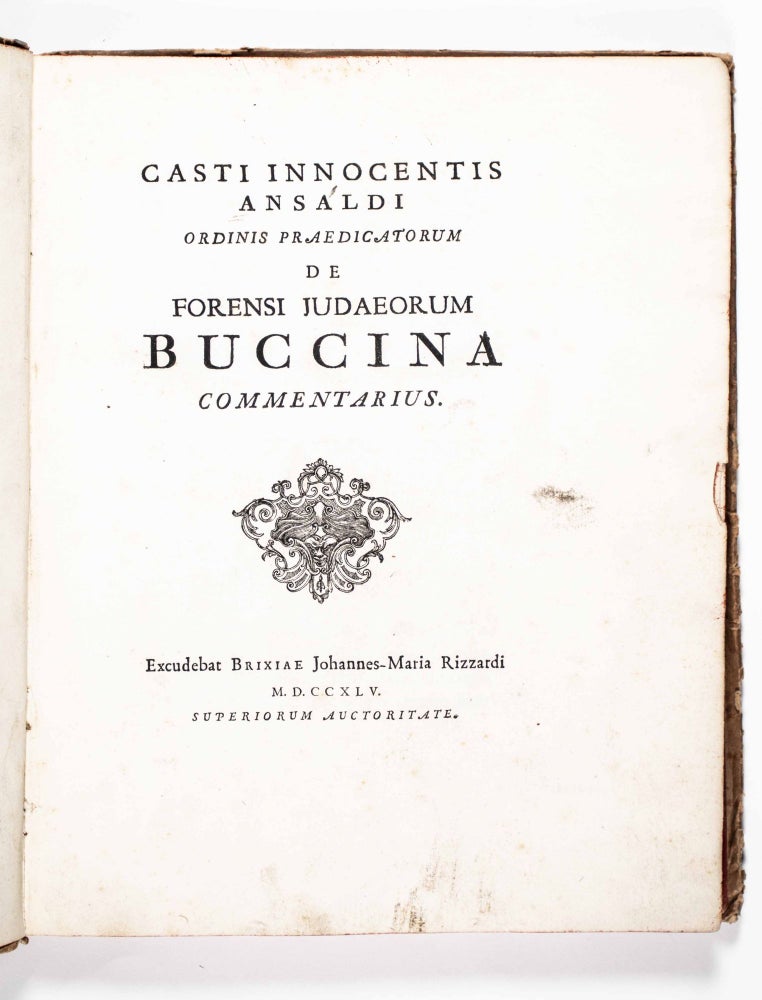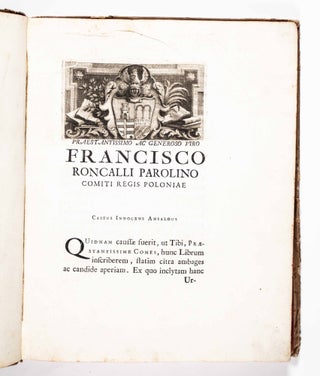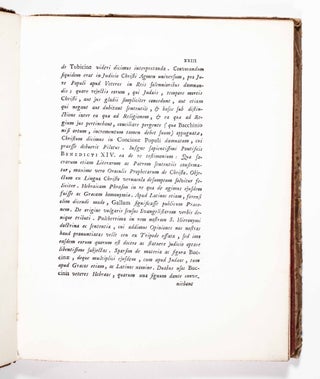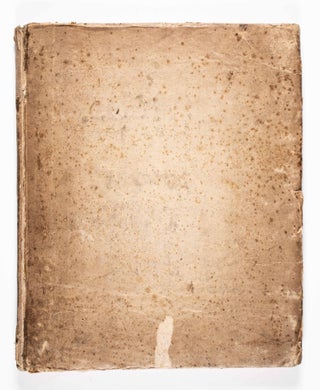Casti Innocentis Ansaldi Ordinis Praedicatorum de Forensi Judaeorum Buccina Commentarius (Commentary on the Shofar)
Brescia: Printed by Johannes-Maria Rizzardi, 1745. Hardcover. Quarto. xxiv, 124pp. Bound in tan paper boards. Red edges. Title page with publisher's device. Headpiece engraving. Decorative endpiece. Critical work and history of the ancient Jewish horn, the Shofar, used for religious purposes in synagogue services on Rosh Hashanah and at the end of Yom Kippur, and every weekday morning in the month of Elul leading up to Rosh Hashanah. The Shofar is blown by the ba'al tokeah, a man especially designated to sound the horn. In Talmudic times it was also blown at the Temple of Jerusalem to introduce the Shabbat. Following the destruction of the temple the sounding of the Shofar was restricted to the place where the Sanhedrin was located. After the Sanhedrin ceased to exist, the sounding of the Shofar at Shabbat was also discontinued.
Casto Innocente Ansaldi (1710–1780) was born in Piacenza. He entered the order of the Dominicans in 1726 and studied going from convent to convent, including Milan, (1727), Bologna (1731) and Rome.(1733), and others. His unorthodox teaching methods triggered opposition leading Ansaldi to travel for six years to Chieti, Venice, Padua, Vicenza, Verona, and Calvisano, all Dominican convents, but his practice stayed outside the monastic discipline. Due to an intervention of pope Benedict XIV. he was appointed professor at S. Domenico di Brescia in 1745, dedicating two of his works to the pope. Teaching Sacred Scripture at the University of Ferrara in 1750 and Turin in 1756, teaching there until 1770. The commentary of the ancient horn of the Jews is his only writing on music.
Text in Latin, some Greek and Hebrew. Name of previous owner and date in red calligraphy on front free endpaper, F. H. Ernst Schneidler, German typographer, calligrapher and professor. Schneidler was an architecture student of Peter Behrens in Düsseldorf and is considered one of the founders of the so-called Stuttgarter Schule for graphic design. Binding with wear along edges, light fraying at lower front corner and tail of spine; paper at spine partially missing and narrow one and a half inch scuff at bottom of front cover. Light smudging on front free endpaper, half-title and title page. Binding in overall good-, interior in very good+ condition. g- to vg+. Item #47655
Price: $750.00





